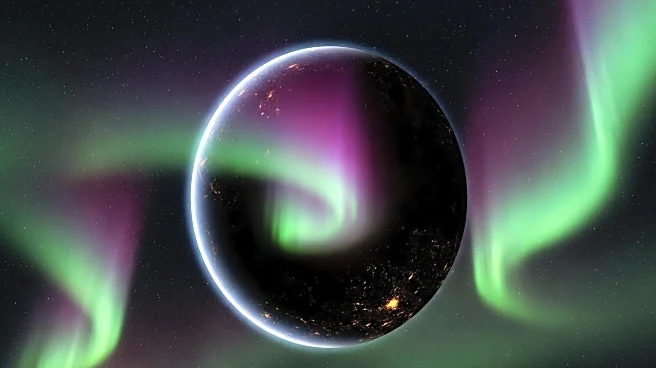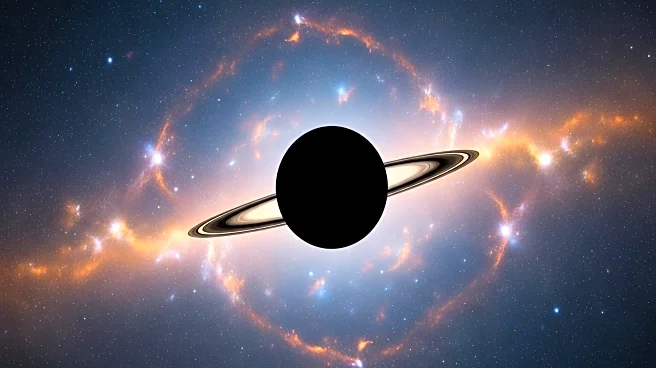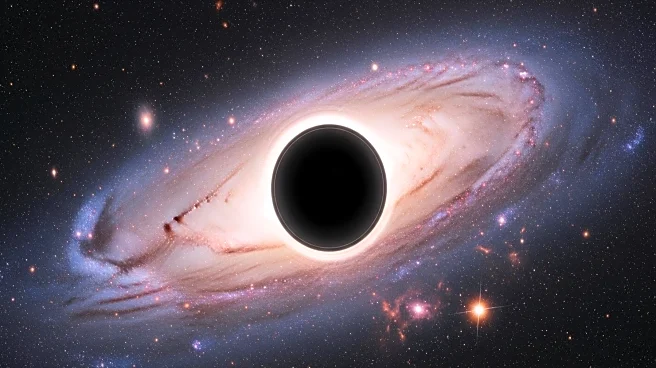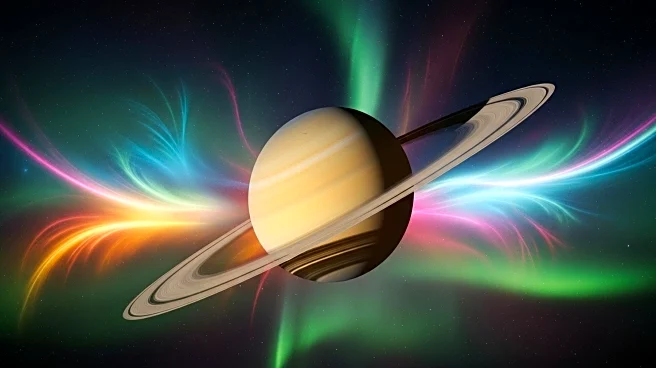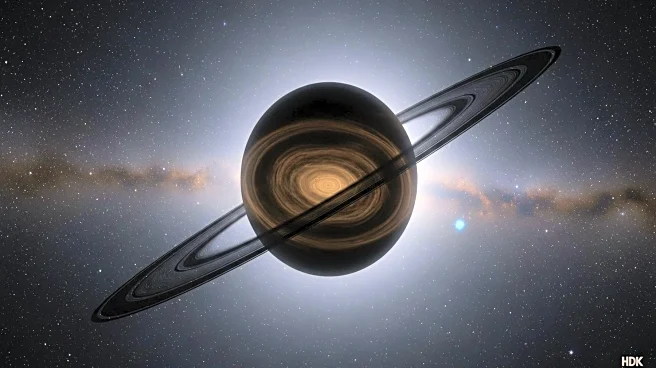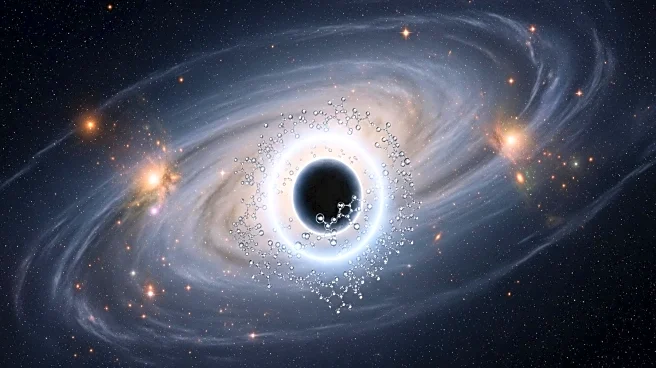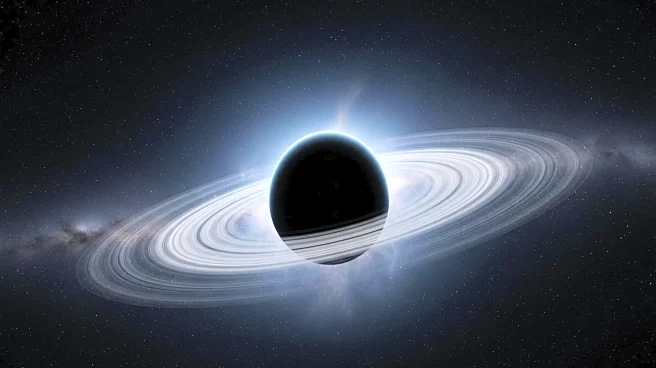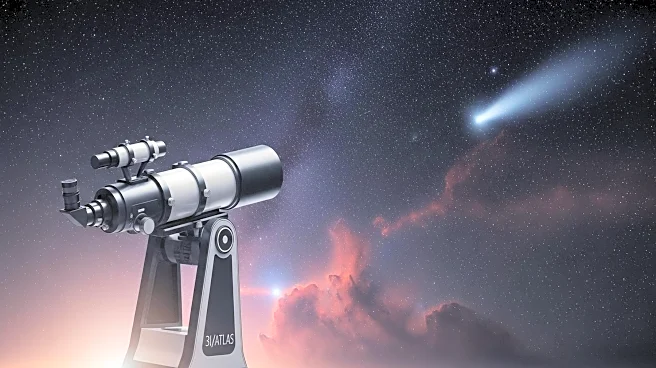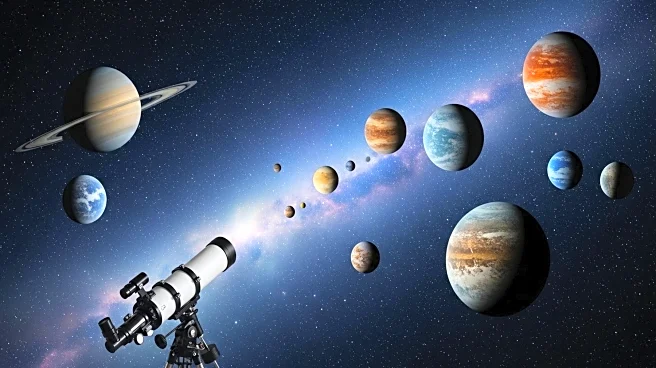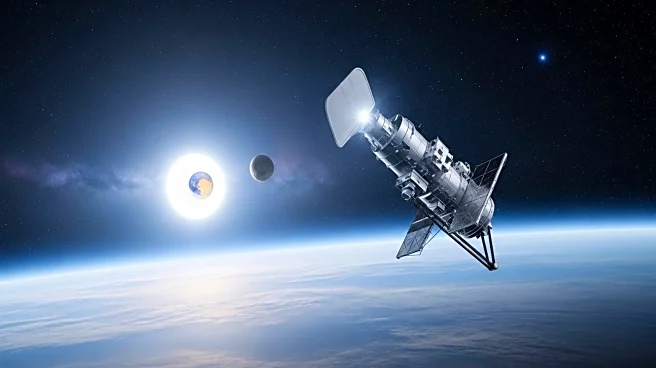What is the story about?
What's Happening?
Astronomers from Trinity College Dublin have utilized the James Webb Space Telescope to study the rogue planet SIMP-0136, revealing strong auroral activity similar to Earth's Northern Lights. The observations showed minute changes in brightness, which helped track temperature, cloud cover, and atmospheric chemistry. The planet's auroral activity heats its upper atmosphere, and the study provided precise measurements of atmospheric dynamics, including temperature changes smaller than 5°C. The findings also noted constant silicate cloud coverage, unlike Earth's variable cloud patterns.
Why It's Important?
The study of SIMP-0136's atmospheric dynamics offers insights into weather processes on extrasolar planets, which is crucial for understanding exoplanets as they are discovered and characterized. The ability to measure atmospheric changes with precision can aid in developing models for predicting weather patterns on other planets, potentially informing future explorations and studies of exoplanetary systems. This research contributes to the broader field of astrophysics by enhancing knowledge of planetary atmospheres beyond our solar system.
What's Next?
Future observations with advanced telescopes like the Extremely Large Telescope and the Habitable Worlds Observatory will expand the study of atmospheric dynamics to a wider range of exoplanets, including gas giants and rocky worlds. These observations will help refine models and techniques for understanding weather processes on diverse planetary bodies, paving the way for more detailed exploration of exoplanetary atmospheres.
Beyond the Headlines
The research highlights the importance of cutting-edge technology and modeling techniques in astrophysics, demonstrating how precise measurements can lead to significant discoveries about planetary atmospheres. The study of auroral activity on SIMP-0136 also underscores the potential for finding similar phenomena on other planets, which could have implications for understanding magnetic fields and atmospheric chemistry in different planetary environments.
AI Generated Content
Do you find this article useful?
